A guide
Customer experience management
Learn how to provide a better customer experience, empower your agents, and retain more customers. Or, if you want to see how CX teams are using Dialpad's AI-powered customer engagement platform to do this, book yourself a product tour!

Customer experience management (CXM) is a hot topic in the contact center world. But what is it, exactly? And how can supervisors make sure they're doing it effectively?
This guide will answer those questions and take a detailed look at insights and tools that make for successful customer experience management, including how to create a good customer journey, what type of customer data to collect. We'll also look at features to look for in software that’ll help with customer experience management.
What is customer experience management (CXM or CEM)?
Customer experience management (sometimes called CXM or CEM) is essentially how you handle your prospects and customers as they move through your entire customer journey, end to end. This includes touchpoints that span awareness, consideration, purchase, retention, and so on.
Even though you might have a “customer experience” team, the truth is that the work that’s involved in CXM encompasses everything from product development and marketing to customer service and support.
Bottom line: Creating a great customer experience requires close collaboration between multiple departments in your company.
CEM vs. CRM: What’s the difference?
Customer experience management (CEM) and customer relationship management (CRM) are two related, yet distinct, processes. Both CEM and CRM involve collecting and analyzing customer data in order to gain insight into customer behavior and ultimately, to win and retain more customers.
The primary difference between CEM and CRM lies in the middle letter of each word—one is more about the experience, while the other is more about the relationships.
CRM typically revolves more around using transactional information such as sales history or contact details, while CEM is more concerned with making sure each step in the customer journey or experience is as frictionless and easy as possible for both potential and current customers. You could also think about this difference as CRM focusing on the “what” of the customer journey (the transactions themselves), while CEM looks at the “why”—why do customers come back (or don't come back)?
Why is CEM important?
Customer experience management (CEM) is becoming increasingly important for businesses, because unless your business sells a truly unique product that no one else has, the customer experience is your next best bet when it comes to differentiating you from competitors.
In fact, according to McKinsey's research, businesses that are working to improve their customer experience have increased sales revenues by 2 to 7 percent—and overall shareholder return by 7 to 10 percent. All simply by focusing on CX, and without changing anything else.
Improving the customer experience doesn't have to be particularly expensive either. With more and more AI contact center and AI customer service tools on the market, businesses have new ways to automate tasks for both agents and supervisors, and uncover insights instantly—among many other efficiencies. This means organizations can now proactively improve every step of the customer journey from initial contact to after-sales service, and ensure that customers have the best possible experience. The result: improved customer satisfaction, more positive word-of-mouth, and higher customer retention over time.
What are the goals of customer experience management?
There are a few main goals that your CXM efforts should try to achieve. Here are three of the most important ones.
1. To reduce your customer churn
One of the biggest reasons that companies in the subscription and SaaS space do CXM is to manage and reduce customer churn.
When you rely on recurring revenue from your customers month after month, you have to be on top of the customer journey and make sure that you’re not losing customers due to poor customer support or a bad website experience. Once you have a good understanding of your customers’ needs at different points in the journey, then you can start making improvements to help them stick around longer.
For example, you could use Dialpad Ai to track common topics and keywords that come up in customer calls that might be leading to churn. If you knew that Feature X is causing issues for your customers, you could create a “Custom Moment” to track how often that’s being brought up:
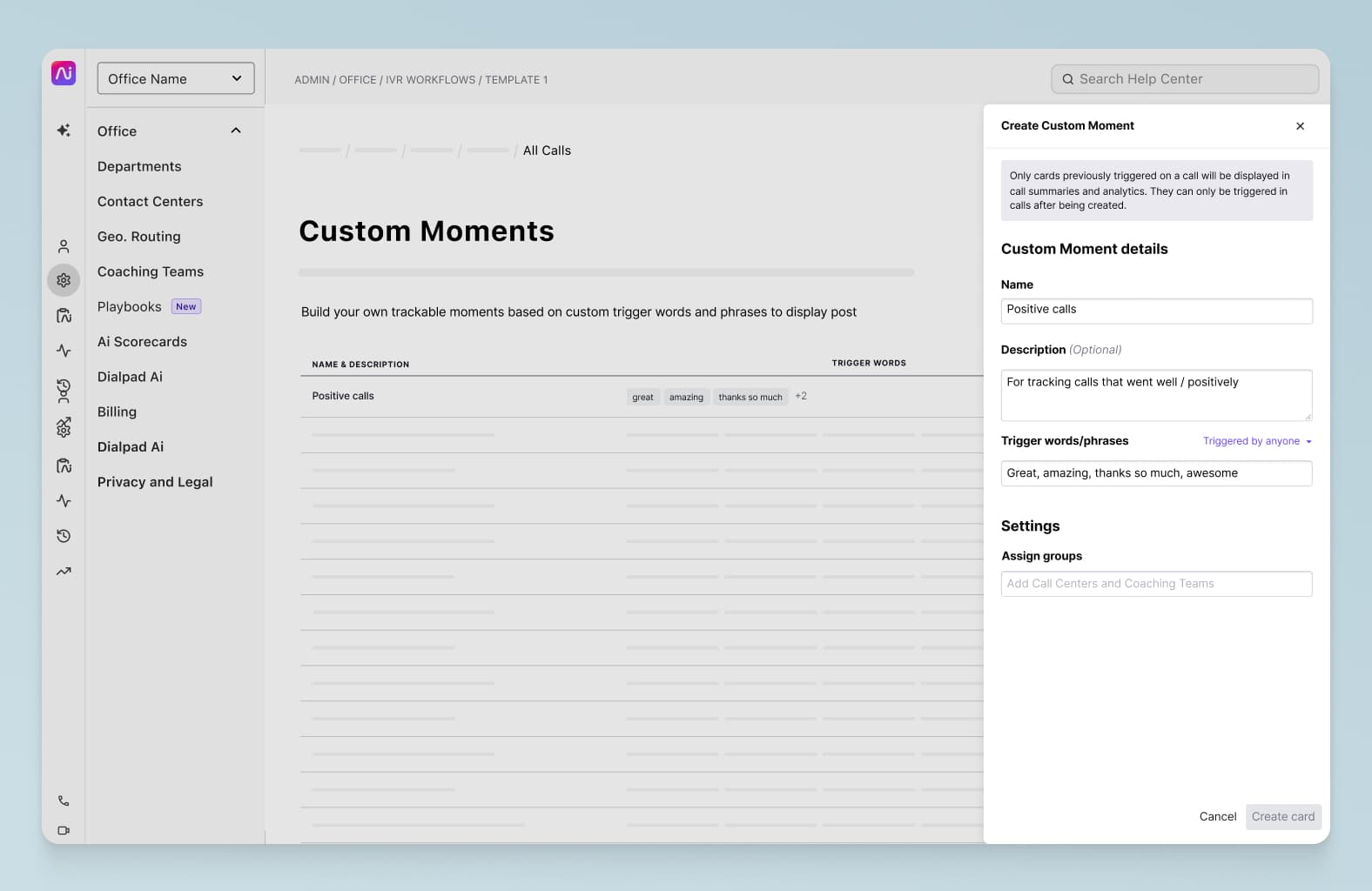
Then, if you do notice any spikes or patterns, you can dig into those call center recordings and transcripts to better understand what’s going on or if you need to involve your Product team:
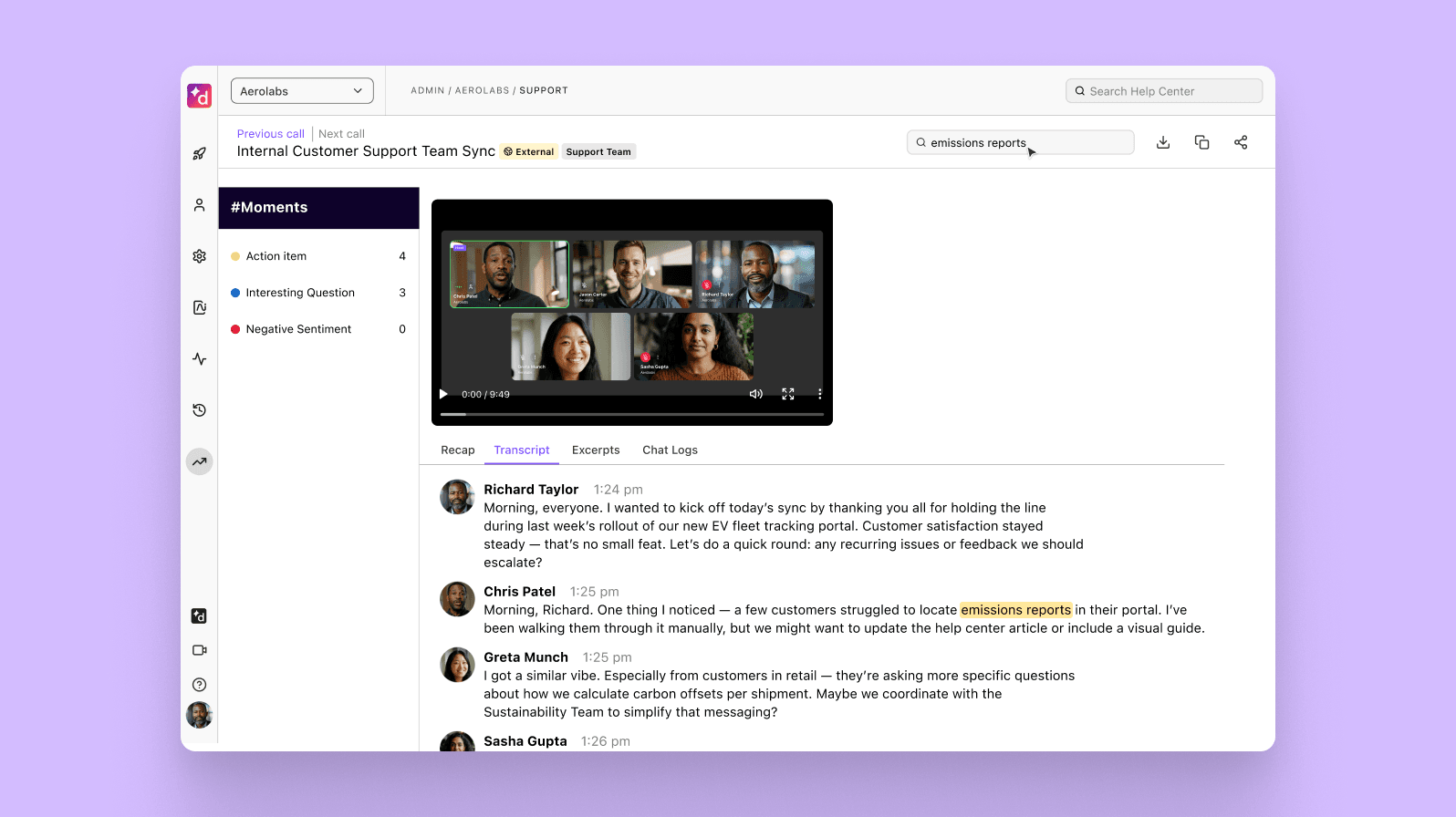
2. To reduce the costs of customer service and marketing
It’s easier (and cheaper) to sell to existing customers than it is to find and win new customers. There’s no shortage of studies and statistics to back that up.
And that’s where having a great customer experience can really help you because it’ll help you increase the lifetime value of your existing customers—which means your Sales and Marketing teams’ hard work won’t be wasted because customers are leaving so quickly.
Smart organizations are already rethinking the role of artificial intelligence in customer experience and how it can help to greatly reduce churn and positively impact their bottom lines.
3. To maximize customer lifetime value
On a related note, a good customer experience strategy strategy will directly improve your bottom line because it increases your customer lifetime value.
The more you can anticipate and stay ahead of issues and potential questions, the happier your customers will be—and the longer you can extend that customer lifecycle.
What are the main elements of customer experience management?
There are three main elements, or pieces, of customer experience management to consider: customer retention, customer engagement, and customer satisfaction. Each of these lines up very roughly with the stages of a typical customer journey. And if you have a good grasp of all three, then you’re in a pretty good place in terms of your CXM strategy.
Customer engagement
Customer engagement is one of the earlier things that most companies will do if you’re looking at CXM chronologically.
This is where you’re building customer loyalty through unique brand experiences (maybe you’ve got a really slick app or digital experience that is much easier for customers to use compared to your competitors) and a well-designed digital customer journey.
It could even be something as simple as having a really fun social media presence or great onboarding process—or you might be known for putting on the most valuable and interesting webinars in your space. The point is that “good” customer engagement doesn’t look the same for every single company. Depending on your customer expectations and your specific industry, you can engage your customers in a variety of different ways.
Customer satisfaction
Customer satisfaction is pretty straightforward—it’s the degree to which customers are happy with your products or services. To increase customer satisfaction, there are some simple steps you can take.
One way is to look at your customer interactions and measure how satisfied your customers are with them. For example, if you’re in healthcare, maybe your patients (aka. your “customers” in healthcare) have been telling you that they want a more convenient way of booking appointments than over the phone, which is what they’re doing now.
To gauge your customer satisfaction, you could run a survey to get a deeper understanding of how your customers are finding this appointment booking option. The best metric to use here is your customer satisfaction, or CSAT score.
With Dialpad, for instance, supervisors can create CSAT surveys and set them to trigger automatically after a phone call, with just a few clicks:
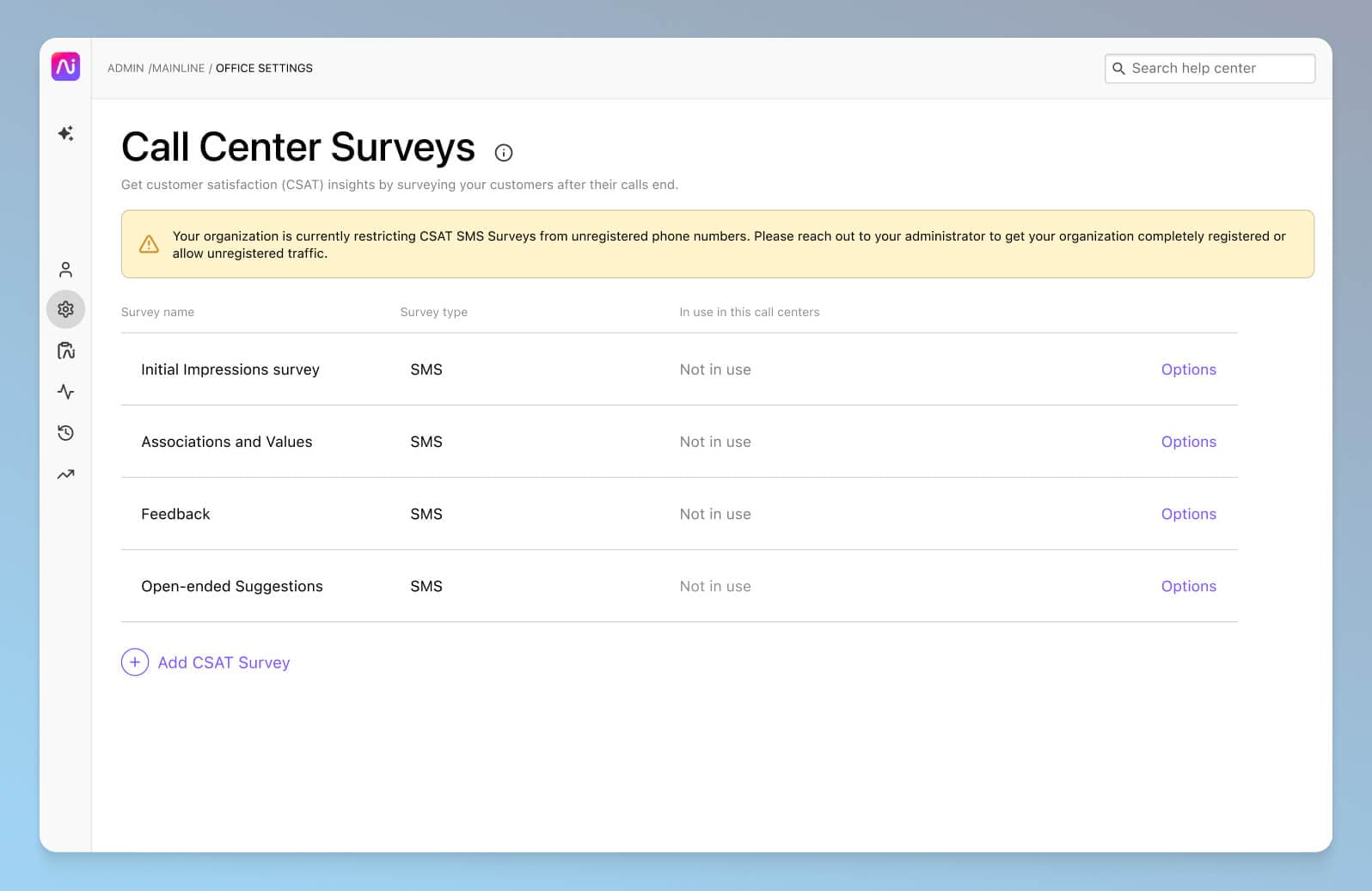
“But what if customers don’t fill out my customer satisfaction survey?” Great question! This is actually one of the biggest challenges with collecting CSAT scores. On a related note, usually only the angriest—and happiest—customers actually bother to respond to these surveys, which means your CSAT answers are likely to be very skewed and not representative of how your customers feel overall.
Dialpad's industry-first Ai CSAT feature is designed to solve exactly that. Not only can our Ai transcribe calls and analyze sentiment in real time, it can also infer CSAT scores for 100% of your customer calls thanks to its hyper-accurate transcription feature. The result? A much more representative sample size for CSAT scores, and a more accurate understanding of how satisfied your customers really are:
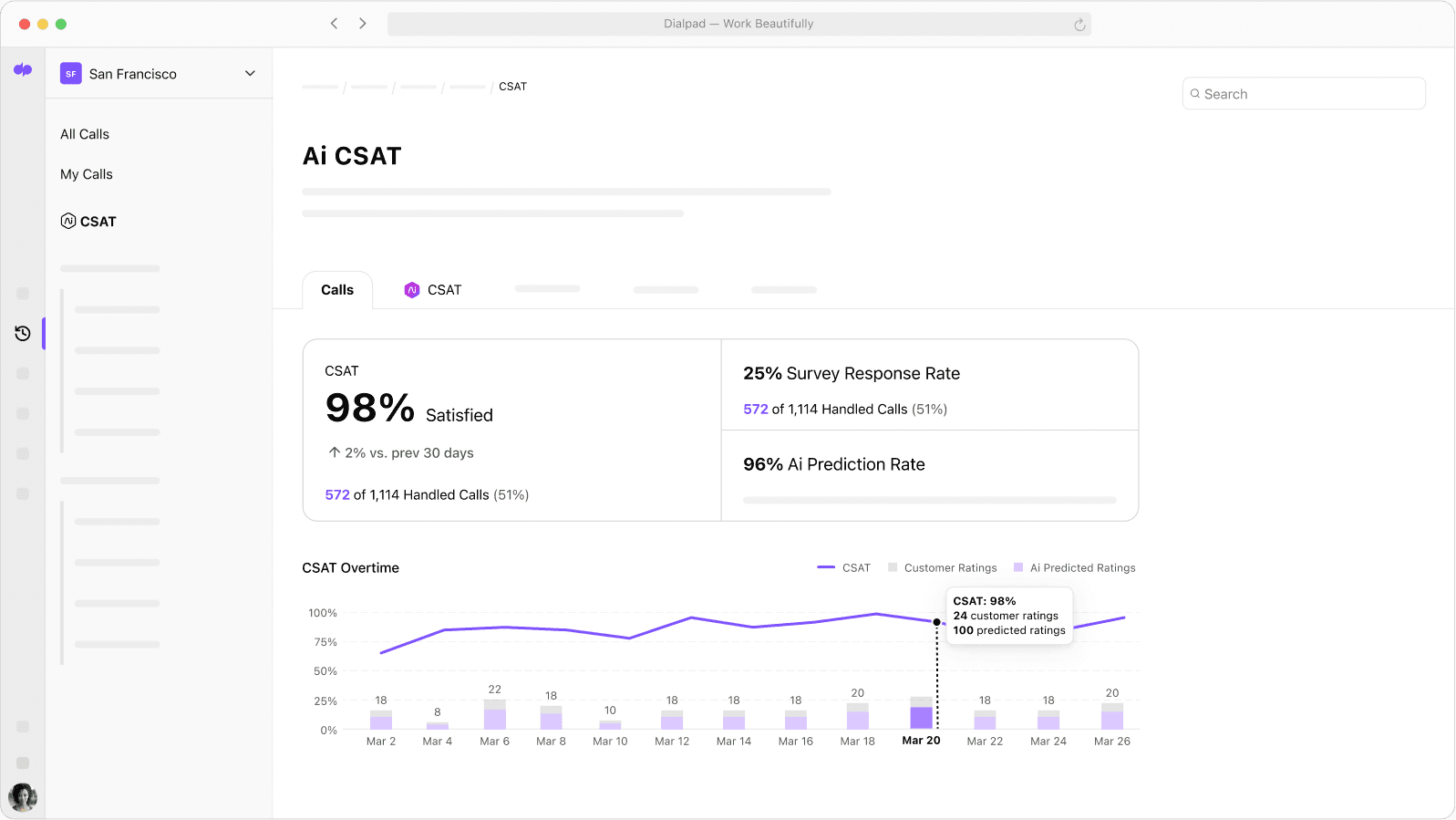
This gives call center managers more comprehensive customer feedback that helps them make better business decisions. Think of it as conversation intelligence, on a whole new level.
Customer retention
Customer retention is a key part of your customer journey because businesses typically want to, well, keep their customers.
Typically, this will include different tasks like building brand loyalty, providing a good experience at all your customer touchpoints, and successfully troubleshooting issues to provide a better customer experience overall.
👉 Dialpad tip:
For SaaS or other subscription-based businesses, reducing customer churn is a huge part of customer retention work, because you’re relying on recurring revenue month after month. If your customers are dropping off faster than you’re winning new customers, then your company’s in pretty big trouble!
Top customer experience management strategies
1. Collect customer feedback
Gathering customer feedback through surveys and reviews is essential for understanding how customers feel about their experiences with your company. This can help you identify and prioritize areas of improvement and make adjustments accordingly. One simple way to automate this process is by using AI (like the Ai CSAT example above).
If you do go ahead with this step, make sure that your team has a process in place to respond in a timely manner to both positive and negative feedback—otherwise, it's a poor experience for customers who took the time to provide those insights.
2. Analyze data regularly
Data provides invaluable insights into how well different parts of your CEM strategy are performing—and what changes need to be made in order to improve performance over time. Using conversation analytics tools, for example, will let you to see which strategies are working (or not) at a glance so you can make informed decisions about where to invest resources in order to ensure optimal results going forward.
Say you work at an investment firm and want to understand which financial products are drawing the most interest. Dialpad's customer engagement platform lets you track how often these products come up in conversation—which can inform business strategy when planning what kinds of investments and services to offer clients:
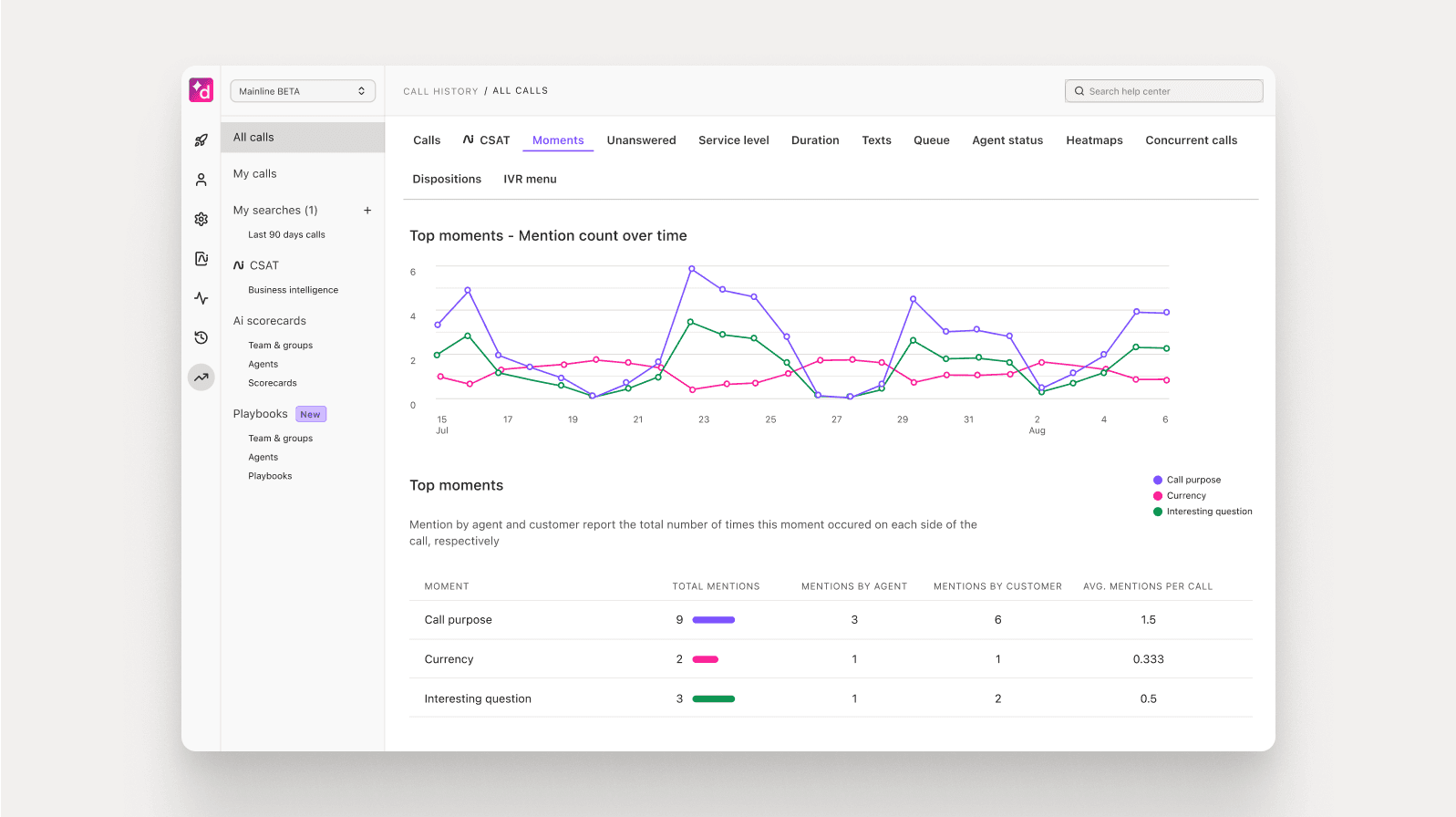
3. Invest in agent training
Contact center training shouldn't end after your new hires' onboarding stage! Industries, products, services, and laws are constantly changing—your agents should always be knowledgeable and up-to-date on current processes.
For example, from a customer experience perspective, one big change in recent years has been the type of communication channels that customers use to reach out to businesses. It used to be almost exclusively phone calls and email, whereas today, many customers reach out to businesses through live chat and social media too—which means your agents should be comfortable handling conversations across these channels too.
4. Automate what you can
Customer conversations can be draining. This is especially true if your agents and supervisors often have to deal with unhappy customers and complaints on a daily basis.
To help them perform well, lighten the load on them where you can. There are many customer service and sales AI tools that can streamline processes and improve efficiency for agents, which saves valuable time for your team members who are responsible for managing the customer experience and having tough conversations.
For example, call pops and real-time agent assists are extremely helpful because they instantly provide helpful information to both new hires and tenured agents when tricky questions come up—and the added benefit here is that managers don't have to personally coach every call either, and your customers get a better experience because their questions are answered quickly. It's essentially automated coaching, on a massive scale.
Helpful features to look for in a customer experience management system
When choosing CXM software, it’s important to keep in mind that there are many different types of software that can help you manage your customer experience.
These include contact center platforms, CRM (customer relationship management) platforms, customer journey map software, NPS (Net Promoter Score) survey software, and many more.
Below, we’ll look at some features that are generally considered “essentials” in terms of day-to-day customer experience management.
Omnichannel capabilities
If your customer interactions span different communication channels, then you should have some type of contact center technology that lets your agents manage all those conversations in one place.
For example, Dialpad allows call center teams to provide an omnichannel customer experience and manage touchpoints including voice calls, video calls, social media channels like Facebook Messenger, live chat, and more—all from a single app:

The benefit of this is that agents can see all that customer data and relationship history in one centralized place. Even if an agent has never spoken to a certain customer before, they can easily pull up that customer profile and get all the context in real time—no data silos or having to ask four or five people what they know about that customer.
It can be a huge differentiator for CX-focused businesses, and you could argue that a good omnichannel customer service platform is an essential piece of an enterprise digital transformation strategy.
CRM integrations
Speaking of which, ideally your contact center provider or phone system should integrate with your CRM to make this kind of automation possible. Dialpad, for example, integrates with Salesforce, HubSpot, Zoho CRM, and more to embed the dialer right inside the CRMs—and also automatically log activities like calls and messages:
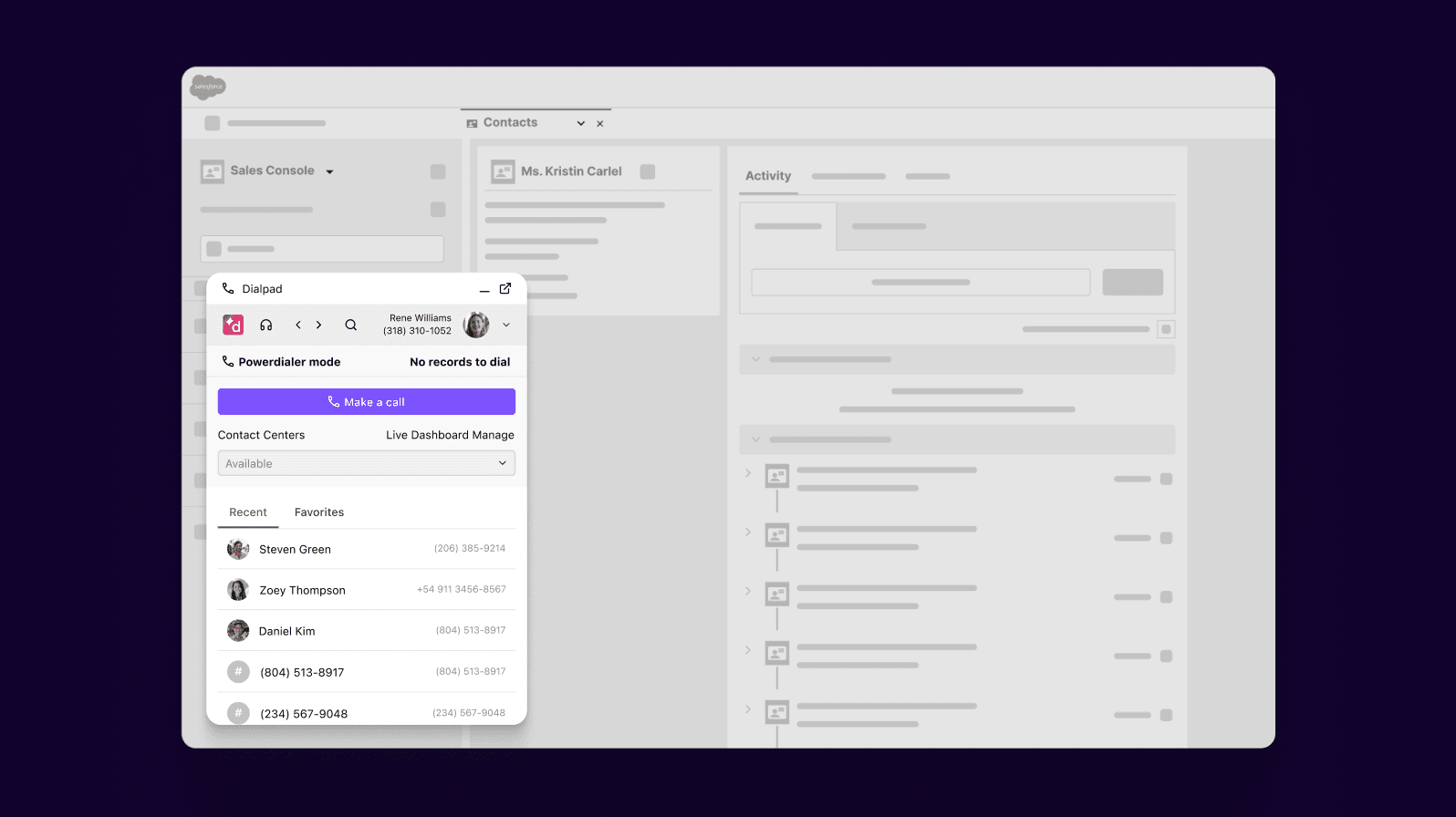
What about AI in customer experience management?
AI is probably the biggest buzzword in the CX world right now—everyone from Gartner to Forrester and your favorite CX micro-influencer on LinkedIn is talking about it.
To make things a little easier, let’s look at a few specific tasks that AI should be able to do in order to help you manage the customer journey:
Firstly, artificial intelligence should be able to transcribe agents’ customer calls in real time. Dialpad Ai does exactly this (with very high accuracy), and even analyzes sentiment of calls in real time:
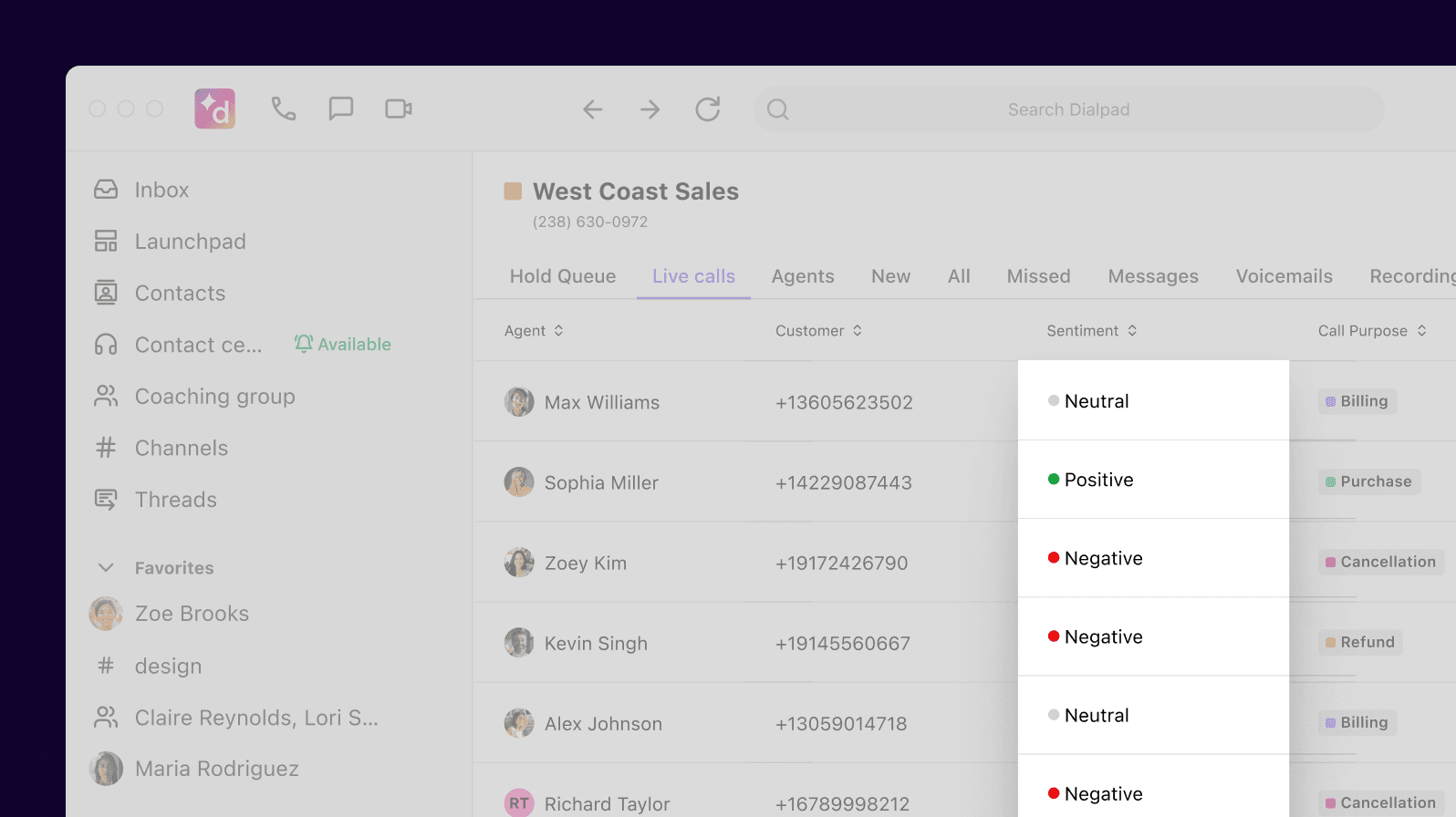
This lets supervisors oversee multiple active calls simultaneously, and more importantly, quickly spot if a call is going downhill and showing negative sentiment. If so, they can quickly pull up the live transcript to get more context before deciding whether we need to jump in to help the agent.
But not only that, Dialpad’s Ai Live Coach automation can also search your knowledge bases and even unstructured sources of data (like PDFs and past customer conversations) for information to help agents answer customer questions in real time—all without managers having to personally coach every call:
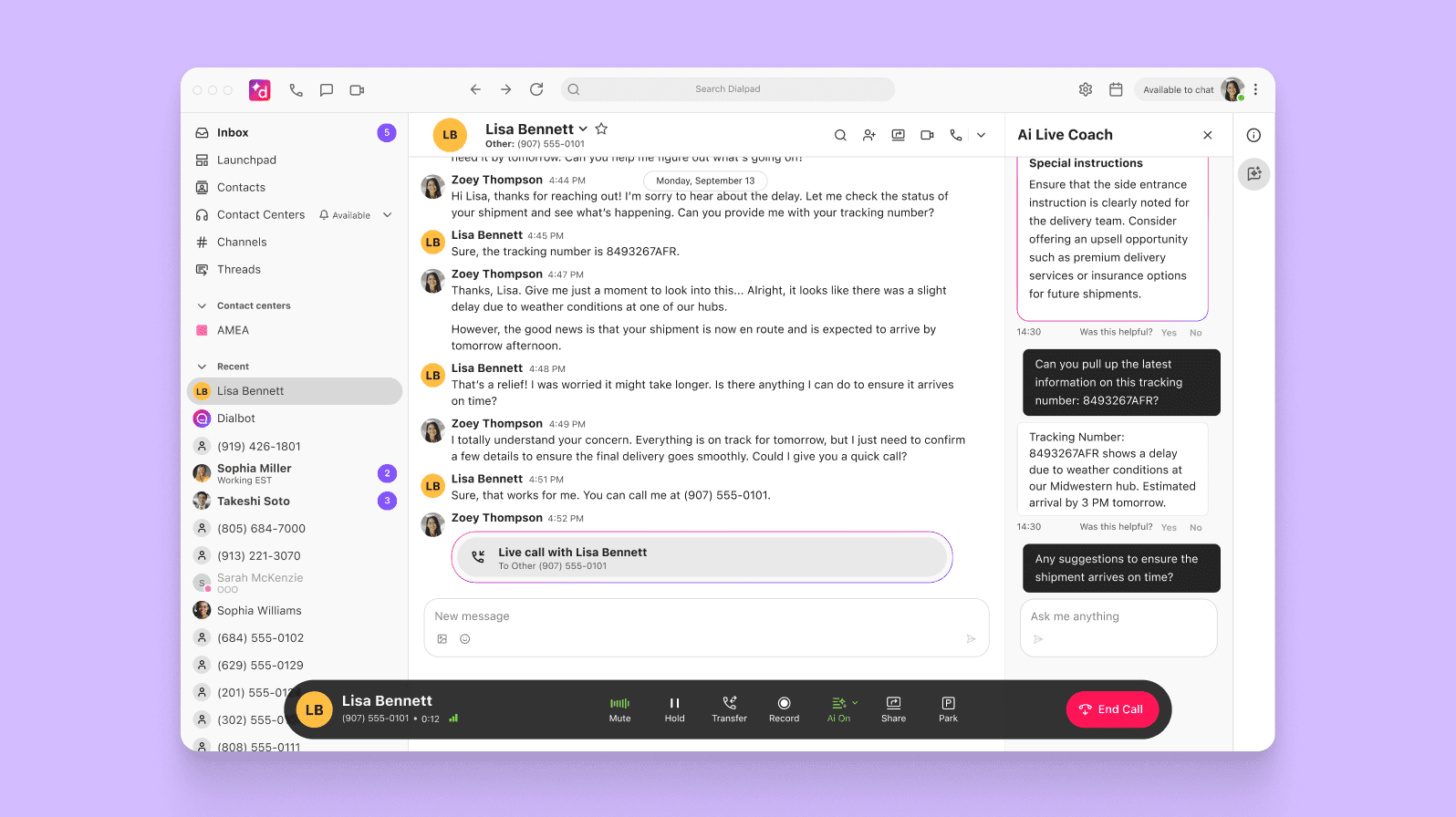
Bolster your brand with the effective customer experience management
Want to earn more loyal customers, create more personalized customer experiences, and uncover more of their insights?
A good customer experience management strategy is a must-have. Not only does it help you build word of mouth and advocacy using your existing customers, it also helps you retain more customers over a longer period of time.
And if you’re looking for a contact center or customer experience platform, book yourself a walkthrough of Dialpad!
See how Dialpad works
Get a personal walkthrough with a demo, or take a self-guided interactive tour of the app!
